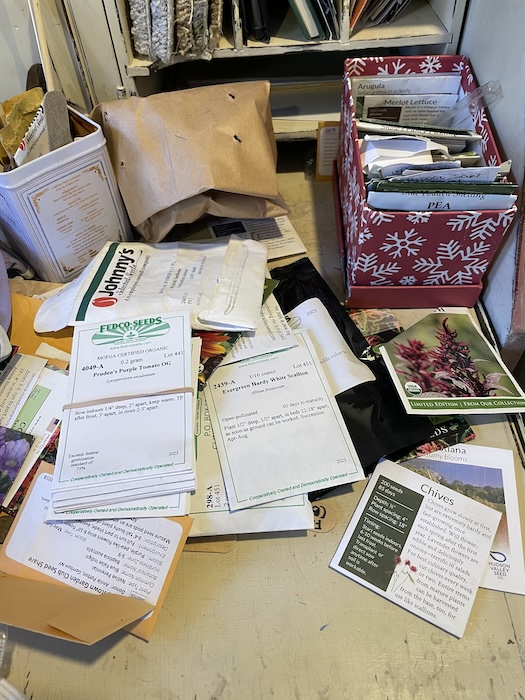Writing a gardening column in winter should be straightforward. There are timely bits about seed sowing, garden planning and seasonal preparation that could be covered. And yet, with the firehose of chaos coming from the federal government, it doesn’t seem straightforward. I’ve been thinking about how the changes in our country impact both journalism and tending to the natural spaces around us.
This week the groups I follow covering scientific research, conservation, climate change and environmental issues are panicked about funding, employment and the impact of suppression, denial and the manipulation of information. Meanwhile, I’m worried about my chickens and bird flu, too.
Most of all, I want to work within this community to find reasons for hope and ways to find solace in tending plants. I’ve been interested in plants and gardening since I was in college and started learning about organic farming and environmental issues related to raising animals for food. I stopped eating meat and revived my parents’ vegetable garden one summer. As I worked long hours after college as a union organizer, I found stress relief while learning about the ferns growing in the yard of my rented house in Seattle and checking every day to see their fronds unfurl in the spring.
At every stage of my adult life, I’ve gardened through the highs and lows and expanded my knowledge base through research, classes and experience. Soil, water, sun, plants, trees — a constant practice that has changed my understanding of the world at every stage of my life and what I value.
For now, all I have sorted out is that I’m writing for all of you who feel the same and who want to find an outlet for expression and connection with the non-human world. Loving nature can be hard. It’s struggling, and maybe it’s easier to look away and avoid the grief of wildfires, dead birds and a forest of barberry where you know other plants should be. Let’s work on this together and find ways to balance the grief and celebrate the many miracles that occur each day.
Now to the basics. After a couple of years of not focusing on the vegetable garden, our family is ready to return to it. I miss the taste, the variety and the happiness of fresh food right there in my yard. As we saw during the pandemic, I expect there will be much interest in growing your own food again this season. During periods of instability, it’s nice to know we can have a bit of control over this essential source of life.
There is a drawer in my house that is full of seed packets. Many are still organized by planting order, with index cards separating them by date. Others are just shoved in. It’s aspirational for sure, like any project drawer that had bigger ambitions than the time allowed. As I’m sorting, the biggest question is how many can still be used and which have expired. The worst outcome is to go through the work of sowing seeds that can’t germinate and lose that window during the growing season.

In general, vegetable seeds can be stored for three to five years. Information on seed packets varies, but most don’t list expiration dates because their usefulness depends on how the seeds are stored. Dry, cool sites without sunlight or variable temperatures are the most stable.
To find out how old the seeds are, check the seed packet. My Fedco seed packets list the year they were packed. The High Mowing packets include a “packed for” year and then a “sell by” date; some were packed in 2018 and sold by 2021, which is probably too old.
Test germination rates by sprouting seeds first. Sprinkle 10 to 20 seeds on a damp, but not soaked, paper towel and cover it with another paper towel. If you’re testing multiple varieties, label and record dates for each one to keep track. Keep the paper towels consistently moist and follow the germination range on the seed packet.
As an example, my peas should sprout in seven to 14 days. If none has sprouted or less than 50 percent have sprouted after two weeks, I need new seeds. If at least 50 percent sprout, I can use them but will probably overseed. I’d rather have too many plants and thin them than not have enough.


I too am looking forward to putting seeds in the ground, nurturing them and watching them grow. I’ve already purchased organic seeds and organic bags of seed-starter mix. My husband and I have been gardening here for 40 years. Replacing invasive species and planting natives has been our goal. We’ve taken advantage of the state’s Trees for Tribs and Buffer in a Bag programs. Half our property is wetlands and we garden there, too.